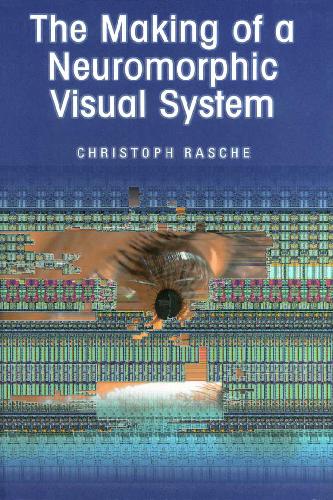Rasche C.0387234691
Table of contents :
Cover……Page 1
Table Of Contents……Page 6
1.2 Speed……Page 14
1.4 Recognition Evolvement……Page 15
1.5 Basic-Level Categorization……Page 16
1.7 Summary……Page 18
2.2 Viewpoint Independence……Page 20
2.3 Representation and Evolvement……Page 22
2.3.1 Identification Systems……Page 23
2.3.2 Part-based Descriptions……Page 24
2.3.4 Scene Recognition……Page 26
2.4 Recapitulation……Page 27
2.5 Refining the Primary Engineering Goal……Page 28
3.1 Hierarchy and Models……Page 30
3.2 Criticism and Variants……Page 33
3.3 Speed……Page 36
3.4 Alternative ‘Codes’……Page 38
3.5 Alternative Shape Recognition……Page 40
3.6 Insight from Cases of Visual Agnosia……Page 42
3.7 Neuronal Level……Page 44
3.8 Recapitulation and Conclusion……Page 48
4.1 The Transistor……Page 50
4.2 A Synaptic Circuit……Page 51
4.3 Dendritic Compartments……Page 52
4.5 A Silicon Cortex……Page 53
4.7 Recapitulation……Page 55
5.1 A Representation with Polygons……Page 58
5.2 A Representation with Polygons and their Context……Page 62
5.3 Recapitulation……Page 64
6.2 Spatial Analysis in the Real Retina……Page 68
6.2.1 Method of Adjustable Thresholds……Page 70
6.3 The Propagation Map……Page 71
6.4.2 Method of Latencies……Page 73
6.5 Recapitulation……Page 77
7.1 The Transform……Page 80
7.2 Architecture……Page 81
7.3 Performance……Page 83
7.5 Fast Waves……Page 87
7.6 Recapitulation……Page 88
8.1.2 Biophysical……Page 90
8.2 Speed Detecting Architectures……Page 92
8.3 Simulation……Page 94
8.4 Biophysical Plausibility……Page 96
8.5 Recapitulation……Page 98
9.1 Integration Perspectives……Page 100
9.2 Position and Size Invariance……Page 102
9.3 Architecture for a Template Approach……Page 105
9.4 Basic-Level Representations……Page 107
9.5 Recapitulation……Page 108
10.1 The Idea of the Contour Propagation Field……Page 110
10.2 Architecture……Page 111
10.3 Testing……Page 113
10.4 Discussion……Page 117
10.5 Learning……Page 120
10.6 Recapitulation……Page 122
11.2 Representation, Evolvement, Gist……Page 124
11.3 Scene Exploration……Page 126
11.4 Engineering……Page 128
11.5 Recapitulation……Page 129
12.1 The Quest for Efficient Representation and Evolvement……Page 130
12.3 Neuroscientific Inspiration……Page 134
12.5 Future Approach……Page 135
Terminology……Page 138
References……Page 142
Keywords……Page 150
Abbreviations……Page 152

Reviews
There are no reviews yet.